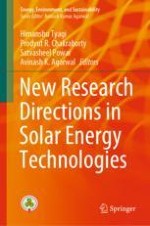2021 | Book
New Research Directions in Solar Energy Technologies
Editors: Dr. Himanshu Tyagi, Dr. Prodyut R. Chakraborty, Dr. Satvasheel Powar, Dr. Avinash K. Agarwal
Publisher: Springer Singapore
Book Series : Energy, Environment, and Sustainability
